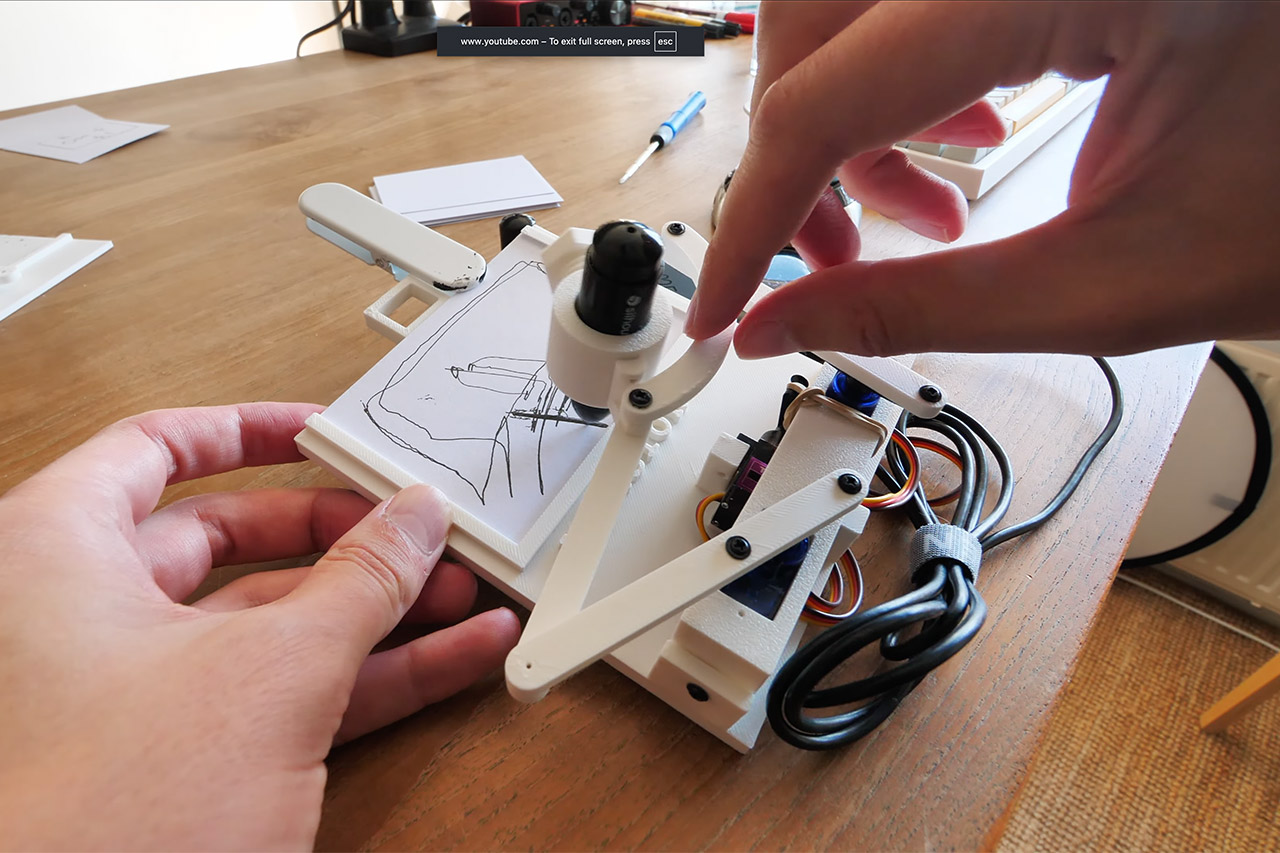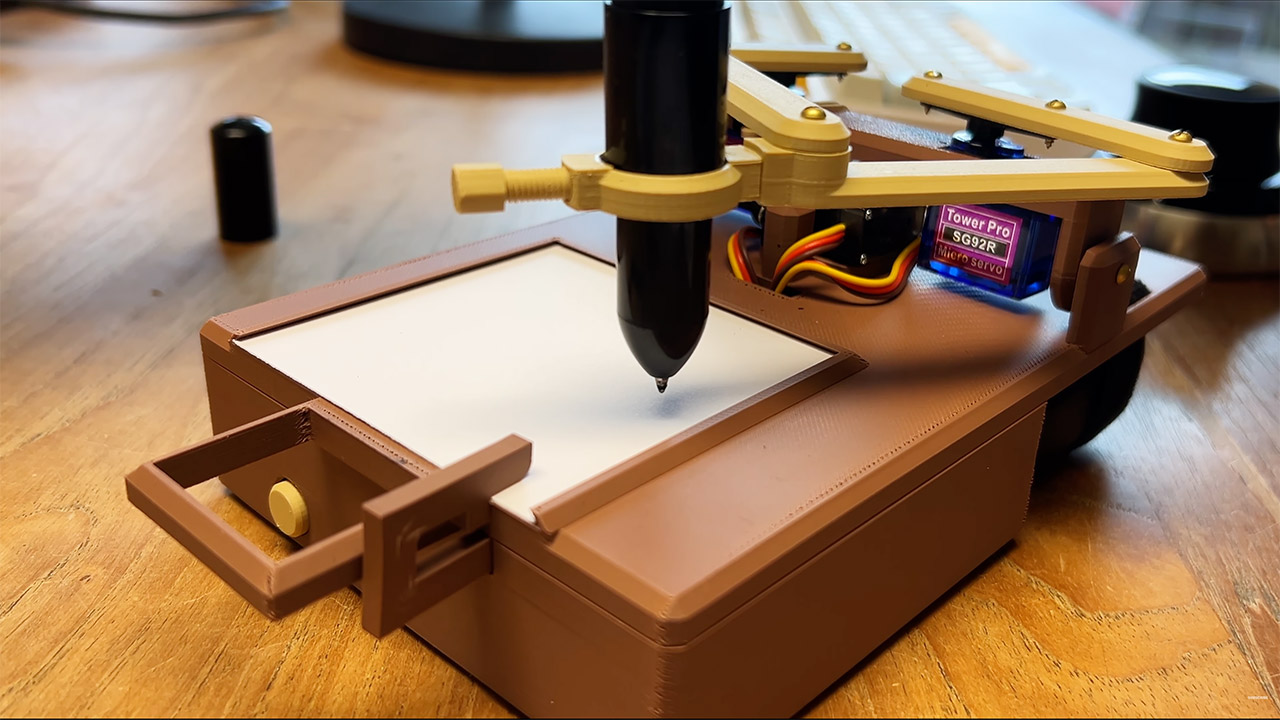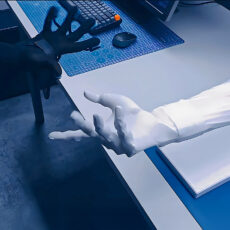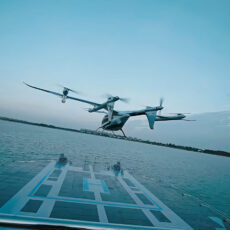
Jens stares down at the row of party guests, his new invention perched precariously on a rickety seat. One by one, they freeze, their faces illuminated by the gentle glow of a low-cost camera module. A few minutes later, the machine starts up, its servos buzzing as a pen scratches across the paper. Jens has been following a wild idea for months, transforming a collection of off-the-shelf parts into the world’s first portable instant sketch camera.
Jens had almost no knowledge of CAD software two years ago. Now, he runs the YouTube channel Strange Inventions, where he turns pipe dreams into reality. He came up with the idea for the SketchCam while perusing robotics forums late at night. Why print static photos when you can use a technology to simulate the intentional, human-like strokes of a drawing? He purchased a Raspberry Pi and some servos from AliExpress, and before you could say ‘SketchCam,’ he was plunging into the project headfirst. What followed was prototypes and dead ends, each failure fueling his determination. Finally, he had a small box that weighed only one kilogram, fit easily into an old thrift-store case, and ran on a power bank.
- High-Speed Precision: Experience unparalleled speed and precision with the Bambu Lab A1 Mini 3D Printer. With an impressive acceleration of 10,000...
- Multi-Color Printing with AMS lite: Unlock your creativity with vibrant and multi-colored 3D prints. The Bambu Lab A1 Mini 3D printers make...
- Full-Auto Calibration: Say goodbye to manual calibration hassles. The A1 Mini 3D printer takes care of all the calibration processes automatically,...

When you point the lens at a face or your wiggling pet, it captures the moment. That raw image is then routed to the Raspberry Pi’s brain, where a custom script begins doing its magic. First, convert it to greyscale to get rid of the color noise. Then comes edge detection, which searches for large brightness shifts to assist identify outlines. Jens spent a long time fine-tuning this part, altering the threshold until it was just right, with enough detail to pick up on expression but without turning into a scribble. Finally, the contours appear as vector lines, with every speck and wobble removed and the lines smoothed down to resemble those made by a real artist.

Robotics gets in on the action with a pair of SG90 servos, which are popular among enthusiasts because to their low cost dependability. Jens connected them to a two-arm system, with each joint designed to sweep a pen across a sheet of paper. The tough component here is inverse kinematics, which must perform the math to translate flat data into angles that accomplish the task. So, if you want the pen point to be three centimeters to the right and one cent up, the algorithm calculates the rotations and accounts for ‘dead zones’ where the arms can simply lock up. To make everything appear smooth, the algorithm also smoothes out the path so that the strokes are constant. Jens even built a simulator to test this out, with green zones marking simple portions and red flags indicating tough parts where the servos were really struggling under the weight or speed.

If you have the necessary tools, putting everything together should just take a few hours. Jens actually sells a maker kit for 129 euros that contains everything you need: a Raspberry Pi Zero for the brain, a camera module, a PWM driver for controlling the servos, and STL files for 3D printable frames. Straps hold the power bank in place, and wires are carefully routed out of the way to keep things tidy. Then it’s just a matter of soldering a few connections, screwing the mounts in place with a long Phillips head, and attaching a fine-liner pen to the business end. A tutorial video leads you through the procedure, from calibrating the pen height at four test points to putting the code onto a micro SD card, and before you know it, you’re up and running. When you switch it on, it draws a fast calibration square, and if the lines are clean and sharp, you’re ready to go. In approximately three minutes, you’ll have a sketch on plain paper that looks decent.










